I tested Blueair's first sub-£100 air purifier - here are my thoughts on its budget-friendly performance
Our Blueair Blue Pure 511 Air Purifier review tests out the brand's first sub-£100 air purifier to see if it can deliver great performance at an affordable price point
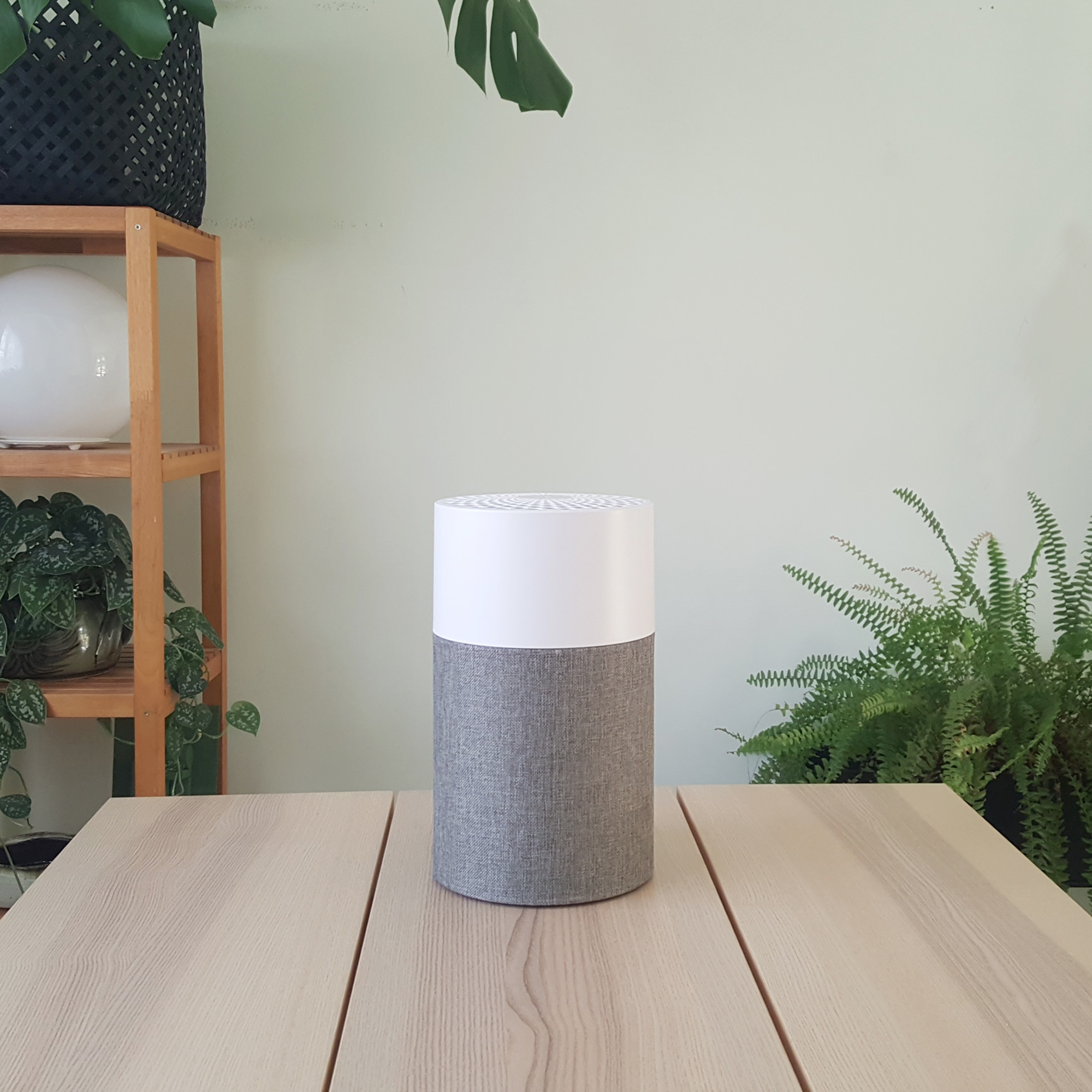
A relatively affordable air purifier that offers a decent CADR for its size and price point, the Blueair Blue Pure 511 offers basic functionality, but does the job.
-
+
Relatively affordable
-
+
Decent CADR for its size and price point
-
+
Compact and portable
-
+
Energy efficient
-
-
No Automatic mode
-
-
No air quality data
-
-
No Wi-Fi connectivity
-
-
No timer
-
-
Controls could be more user-friendly
-
-
Design feels a bit lacking in places
Why you can trust Ideal Home

Quick Menu
Our Blueair Blue Pure 511 air purifier review puts the brand's most affordable, entry-level air purifier through its paces to see if it offers good value for money compared to the best air purifiers the Ideal Home team has tested.
The Blueair Blue Pure 511 air purifier is the brand's first sub £100 air purifier, designed to make air purification more affordable. According to Lars Dunberger, Technology Development Manager at Blueair, this lower price point has been achieved by 'stripping back smart technology and interactive features to simply deliver a high performing air purifier that looks good'.
That means that the Blue Pure 511 lacks any bells and whistles, but offers an impressive Clean Air Delivery Rate for its size and price point, with a CADR of 191m³/h that makes it suitable for filtering the air in a space up to 38m².
I tested it out in my own home to see how it performed in practice. Read on to see how I got on.
Blueair Blue Pure 511 Air Purifier review
Specifications
- Recommended room size: 38m²
- CADR: 191m³/h
- Noise levels: 24-49dB
- Filter type: HEPASilent Filter with carbon sheet and activated coconut shell carbon
- Dimensions: H34 x W20 x D20cm
- Weight: 1.9kg
- Wattage: 2-16W
- Smart App connectivity: No
- Timer: No
- Auto mode: No
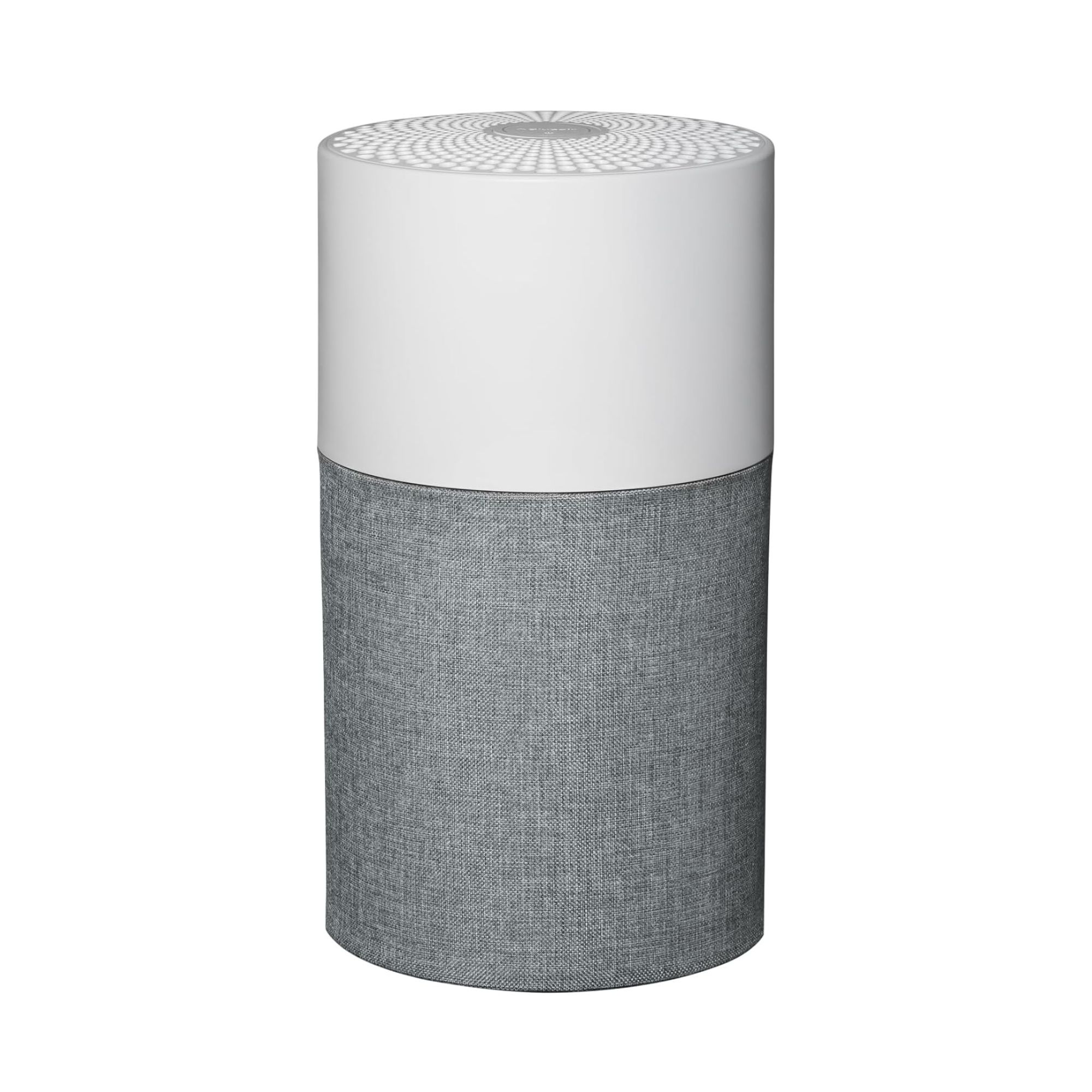

How I tested

I'm Amy, one of the Ideal Home team's Ecommerce Editors. My job involves putting all manner of products through their paces to find the best recommendations for our readers. I've tested multiple products that promise to improve the air quality in our homes and deliver indoor climate control, including the best dehumidifiers, best fans and best portable air conditioners on the market. I tested the Blueair Blue Pure 511 Air Purifier in my own home to see how it coped with everyday decreases in air quality caused by smoke, VOCs, cooking fumes, and dust.
Assembly and set up
The good news is that there's no assembly needed with this air purifier. Simply unbox, unwrap, and you're ready to plug it in and switch it on!
Design
The Blue Pure 511 echoes the design of Blueair's more expensive air purifiers, with a cylindrical design and the lower section of the air purifier covered in a woven fabric which doubles as the pre-filter.

The Pure 511 air purifier is similar in looks to the higher specification Blueair Blue Max 3250i, which we rate as the best air purifier overall based on its combination of style, performance and value for money.
However, when compared side by side, (the Blueair Blue Max 3250i is on the left and the Blue Pure 511 on the right in the image below) it's obvious up close which is the more expensive model, mainly due to the fabric used on the Pure 511.
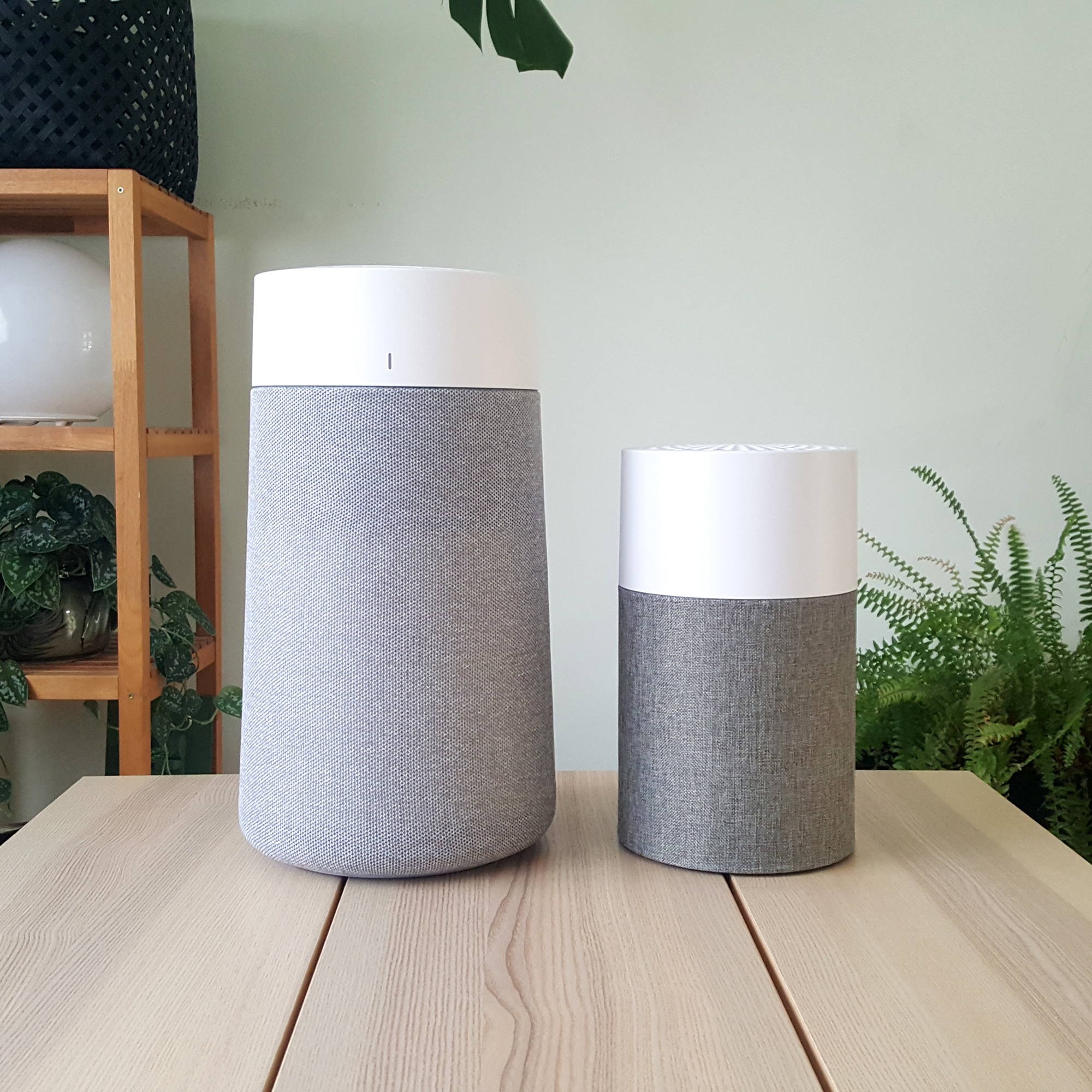
Unlike the higher specification Blueair Blue Max 3250i, which features a snug-fitting elasticated fabric cover, the cover of the Blue Pure 511 instead has just has one elasticated section which is covered by a fabric flap that fastens with velcro. This means the fit of the Blue Pure 511's fabric pre-filter is baggier and overall it feels to lack the same finish quality as the Blue Max 3250i.
Compared with the Blue Max 3250i, the Blue Pure 511 also lacks an air quality indicator light, and that's because there's no built-in air quality sensor on the Blue Pure 511. This means that there's no automatic mode on the Blue Pure 511, just on/off functionality and the choice of three fan speeds all controlled by two fairly small buttons on the top of the unit.
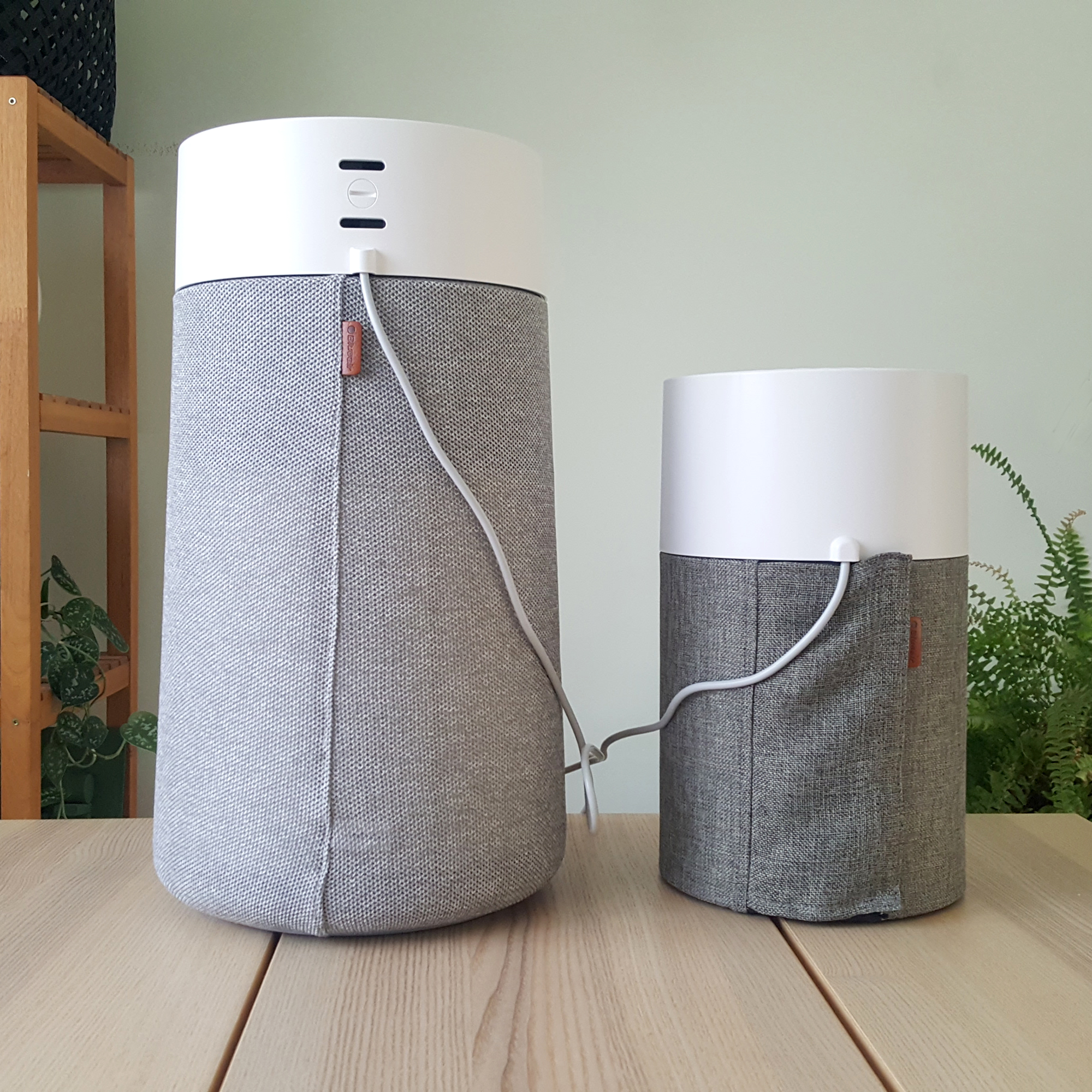
Performance
Considering its relatively affordable price point, the Blueair Blue Pure 511 air purifier offers a decent CADR (Clean Air Delivery Rate) of 191m³/h which makes it suitable for filtering the air in a space measuring up to 38m².
As mentioned, the Pure 511 features three fan speeds that you can adjust manually via the controls at the top of the air purifier, but what it lacks in comparison to more expensive air purifiers is an automatic mode.
Having now put a whole host of air purifiers through Ideal Home's air purifier testing process, I think this lack of functionality is a big loss. However, it's the lack of built in air quality sensor that makes the Pure 511 more affordable.
What that means in practice is that you'll need to operate the Blueair Blue Pure 511 air purifier manually. An air purifier with an automatic mode uses that built-in air quality sensor to measure the air quality, and then uses the air quality data to control the air purification process itself. For example, if the air quality suddenly dips, then the air purifier will sense this and turn itself on to filter the air and return your room's climate to best possible air quality as quickly as possible.
Because the Blueair Blue Pure 511 air purifier doesn't have this feature, it's up to the user to decide when to turn the air purifier on and off. This can prove tricky, as in practice that either means relying on your nose or your allergies to alert you to a dip in air quality – not always the most reliable method as many airborne pollutants don't have odours. Alternatively, you could leave the air purifier running constantly, but – even though the Pure 511 isn't particularly energy hungry – this could still rack up your running costs.
However, one thing that most of us can easily identify is the fumes from frying bacon! So this was the first test I put the Blueair Blue Pure 511 air purifier through to test its filtration powers.
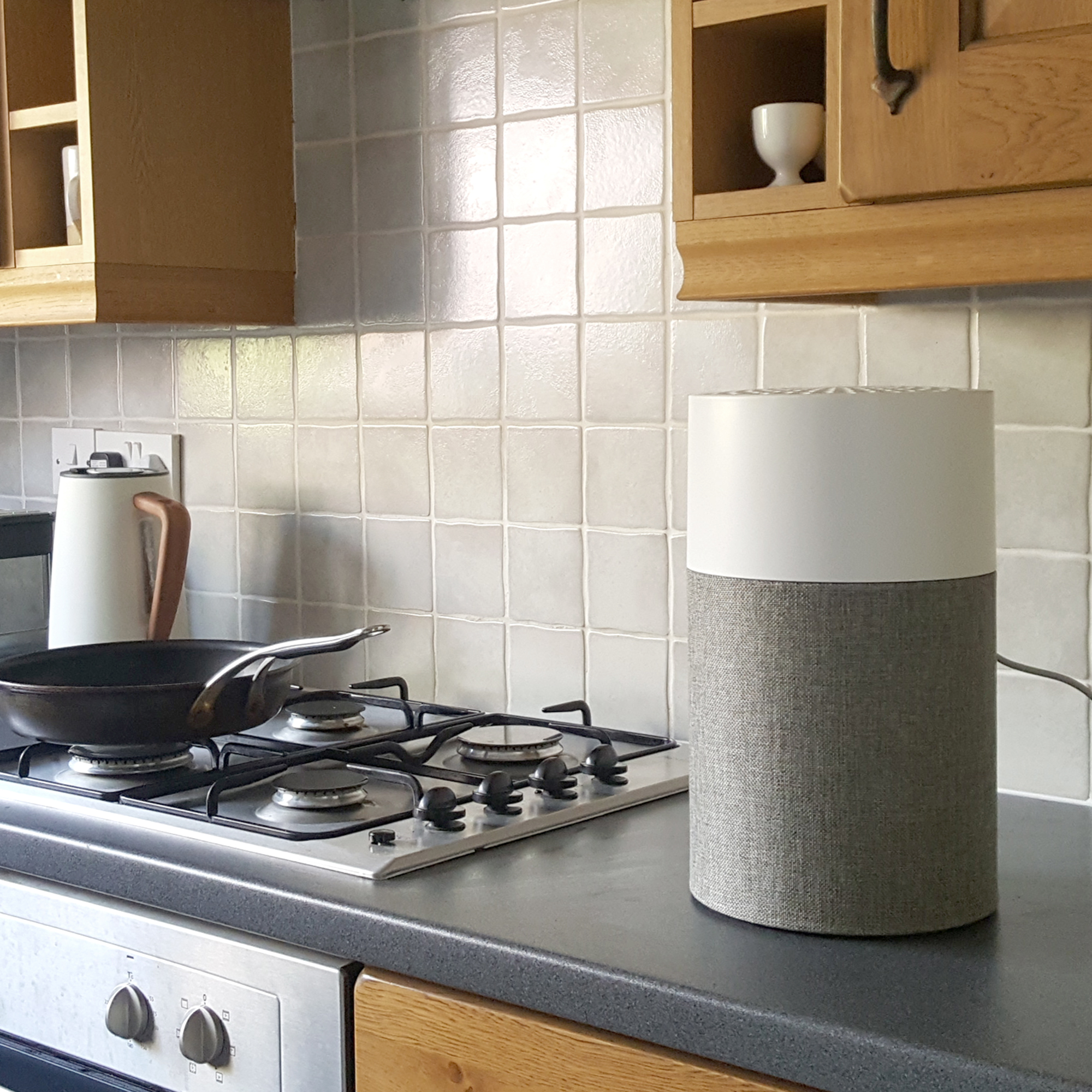
All of the air purifiers with automatic modes that I've put through the fried bacon test switched up to their highest fan speeds once they'd detected bacon frying fumes, so I gave the Blueair Blue Pure 511 air purifier a headstart and began running it on its highest fan speed as soon as the plant-based bacon hit the pan.
After about four minutes the bacon had crisped up, so I left the Blue Pure 511 running in the kitchen with the door closed whilst I exited and tucked into my bacon butty. In previous tests, air purifiers with a built-in air quality sensor showed that the kitchen had been cleared of frying fumes in about 10-15 minutes, so I left the Pure 511 running for a quarter of an hour, and then re-entered the kitchen to see if I could still smell cooking fumes.
There was a noticeable reduction in the bacon fumes, however, there was still a lingering smell in the kitchen – more so than with the more powerful air purifiers I've tested.
I used an independent device fitted with an air quality sensor to see how the Blueair Blue Pure 511 had performed, and the air quality reading came back as 'good' rather than 'very good' initially. I left the Pure 511 running for longer, and after around 20-25 minutes in total the air quality reading changed to 'very good'.
I also put the Blue Pure 511 air purifier through Ideal Home's smoke and VOC tests, by allowing a match to burn out next to the air purifier and spraying deodrant nearby to see how well it removed both odours.
In all of our tests the Pure 511 did a decent job, however, it wasn't the fastest at filtering out airborne contaminants – unsurprisingly considering its smaller size and more affordable price tag. And I definitely missed having that built in air quality sensor that allows automatic performance and access to in depth air quality data.
Ease of use
The plus side of the Blue Pure 511's limited functionality, is that it does make its controls fairly easy to master.
There's just an on/off button on the top of the unit, and then a second button that controls the three fan speeds. Press once for the lowest fan speed, twice for medium fan power, and three times for the highest fan speed.
A little confusingly, in the instruction manual Blueair refers to these three fan speed settings as Night, Everyday, and Boost mode, but all they really seem to do is change the fan speed, and on the air purifier itself they're simply labelled 1, 2, and 3.
That said, you have to peer very closely at the top of the unit to make out those numbers. The font choice seems uneccessarily small, and would be tricky for anyone with any kind of visual impairment to read. There is also a (very) small light that momentarily shows up next to each speed setting so you know which one you've selected, but annoyingly this light disappears almost instantly, so when the air purifier is running you can only judge by its volume which speed setting it's on.
The buttons themselves are also quite small. They're formed by indentations in the hard plastic control panel surface, and I found it could be a bit hit and miss as to whether each press registered.
All in all, what should be a very easy to use air purifier is made harder than needs be because of those too small and not very responsive control buttons, which is a shame.
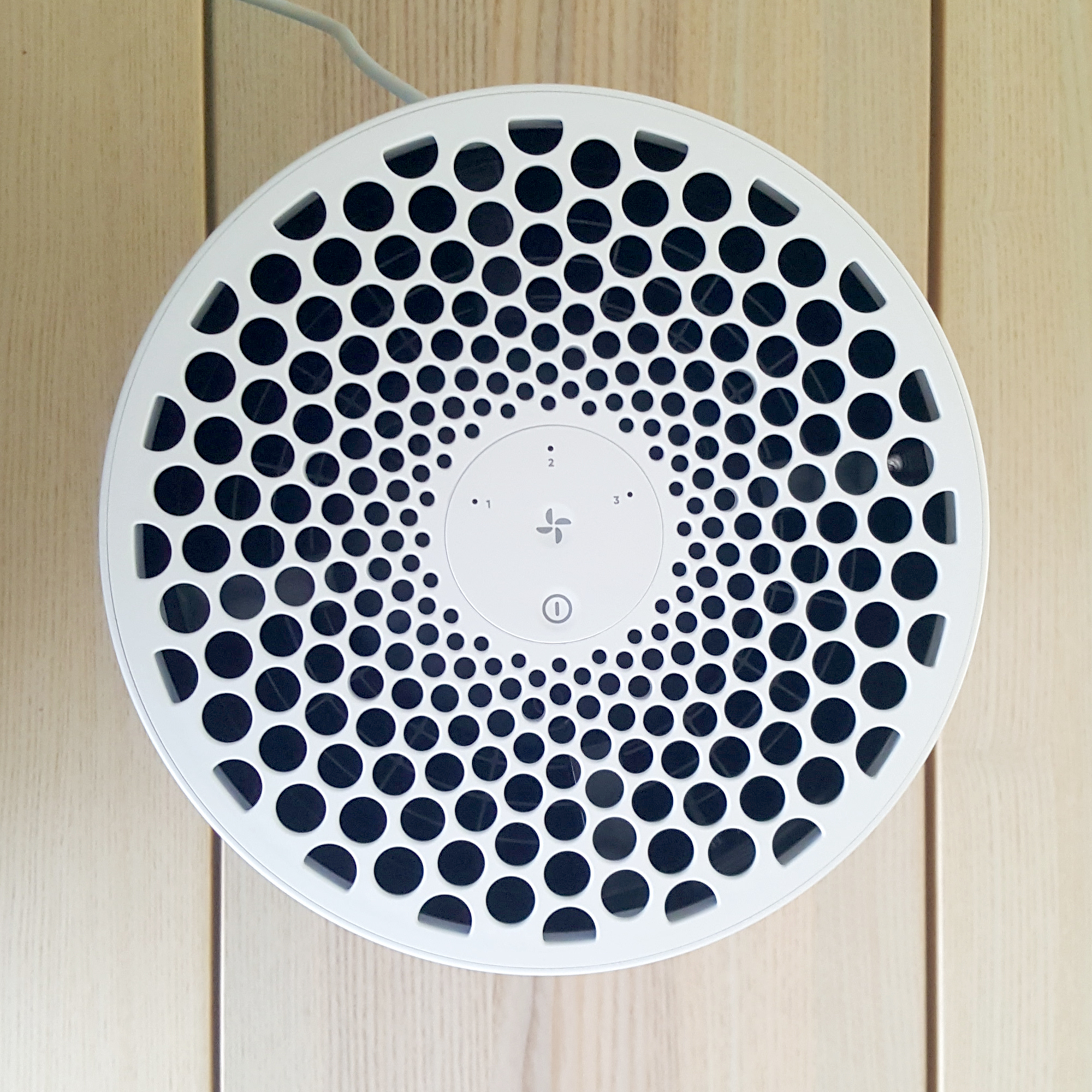
Noise levels
The Blueair Blue Pure 511 air purifier's official noise rating is between 24-49dB, dependent on which fan speed you have it running on.
This is noisier than the slightly more expensive Blueair Blueair Blue Max 3250i air purifier, but on a par with most mid-range air purifiers of this size.
In practice I found the noise levels easy enough to ignore, and its certainly quieter than most larger and more powerful air purifiers.
Portability
The Blue Pure 511 is one of the smallest air purifiers I've tested, measuring just H34 x W20 x D20cm.
That makes it a great option for small spaces, and, weighing in at just 1.9kg, it's also lightweight enough to pick up and move around the home. However, it does lack any hand holds, so you do need to have the ability to grip its cylindrical build with two hands.
A built in carry handle would have been a nice touch, although no doubt this would have added to the budget air purifier's price tag and pushed it over the £100 mark.
Its small footprint also means it's a good option for placing on a shelf or work surface, or tucking onto a bedside table.
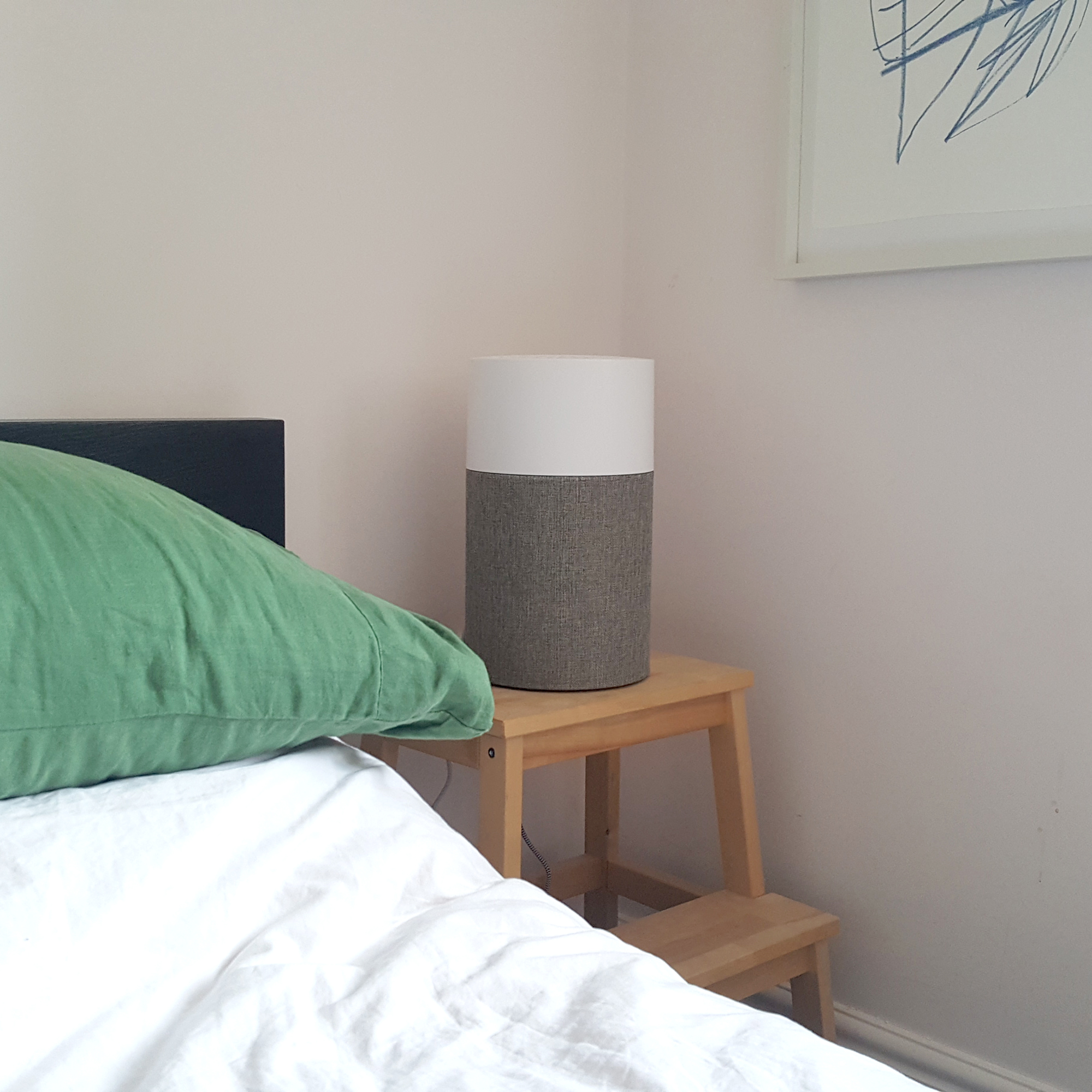
Energy use
In comparison to most air purifiers, the Blueair Blue Pure 511 offers pretty low energy usage, running on just 2-16W of electricity depending on which fan speed you have it operating in.
However, because it doesn't have a built-in air quality sensor, that means there is no automatic mode to automatically regulate the air purifier's fan speed when air quality dips or improves. That means the Blue Pure 511 relies on the user to determine when the fan speed should be switched up and down through the three speed settings, and when the air purifier should be turned on and off. If you leave it running continuously, that could mean your energy costs rack up more than they would with an air purifier with automatic functionality.
You can find out more details about how much it costs to run an air purifier in our dedicated guide.
Filter replacement
The Blueair Blue Pure 511 air purifier is a relatively affordable buy, however, as with all air purifiers, you also need to factor in the ongoing cost of buying replacement air filters.
Manufacturers usually advise that an air filter should be replaced roughly every six months, as after this point the filter will gradually become clogged up with particulate and its efficiency reduced. And the Pure 511 is no exception. The air purifier has an indicator light that glows red when the air filter needs replacing, and Blueair advises this typically occurs after around six months of operation.
Thankfully, when its time to replace your Pure 511's filter, you'll find they're cheaper than most. As of writing, replacement filters for the Pure 511 cost around £25, which is at the lower end of the price scale. For comparison replacement filters for the (admittedly much larger and far more powerful) AEG AX91-604GY Connected air purifier cost around £100!
Verdict
Overall, the Blueair Blue Pure 511 air purifier feels more basic – both in terms of style and functionality – than our top-rated Blueair air purifier, the Blue Max 3250i. Especially considering the Blue Max 3250i isn't that much more expensive.
The Blueair Blue Pure 511 is also less powerful than the higher specced Blue Max 3250i. The Pure 511 offers a 191m³/h CADR that can improve air quality in a space up to 38m², whilst the Blue Max 3250i has a 239m³/h CADR and can manage air quality in a space of up to 48m2.
But, the Blueair Blue Pure 511's CADR is still impressive for an air purifier at this price point. In comparison, the most affordable air purifier Ideal Home has tested, the Beko ATP5100I Air Purifier, can only manage the air quality in a much smaller 13m² space.
For some, the Blue Pure 511's lack of Wi-Fi connectivity will be a bugbear as this means no remote or voice-activated controls. However, in my opinion, the Blue Pure 511's biggest downside is its lack of built-in air quality sensor which means no automatic mode. You can toggle the Pure 511 through three fan speeds for low, medium, or high filtration, but without Automatic mode, that still makes for very limited functionality. And unlike models with built-in air quality sensors, that means there's no air quality data available with the Pure 511.
If you're looking for a compact air purifier that will make short work of improving the air quality in a small to medium-sized space, then, personally, I would opt for the brilliant Blue Max 3250i with its air quality sensor and automatic mode instead.
However, if price is paramount, the more affordable entry-level Blue Pure 511 air purifier still does a decent job in a small space. In my opionion, it just lacks the extra functionality and design flair to make it truly user-friendly.
Get the Ideal Home Newsletter
Sign up to our newsletter for style and decor inspiration, house makeovers, project advice and more.

Amy is Ideal Home’s Sleep Editor and the Ideal Home Certified Expert on Sleep. She's spent the last four years researching and writing about what makes for the best night’s sleep during the day and testing out sleep products to find the best-in-class by night. So far she’s clocked up over 10,000 hours of pillow, duvet, and mattress testing experience.
Our go-to for all things sleep-related, she’s slept on and under bestselling products from Simba, Emma, Hypnos, Tempur, Silentnight, Panda, and many many more.
As a hot sleeper, Amy is always on the lookout for the most breathable bedding, but she also leads a wider team of testers to ensure our product testing encompasses both hot sleepers, cold sleepers, front sleepers, back sleepers, side sleepers, and everything in-between.
-
 Aldi is launching a £200 day bed with four different features - its sleek design is suited to the whole family
Aldi is launching a £200 day bed with four different features - its sleek design is suited to the whole familyYou don't want to miss out on this Specialbuy
By Kezia Reynolds
-
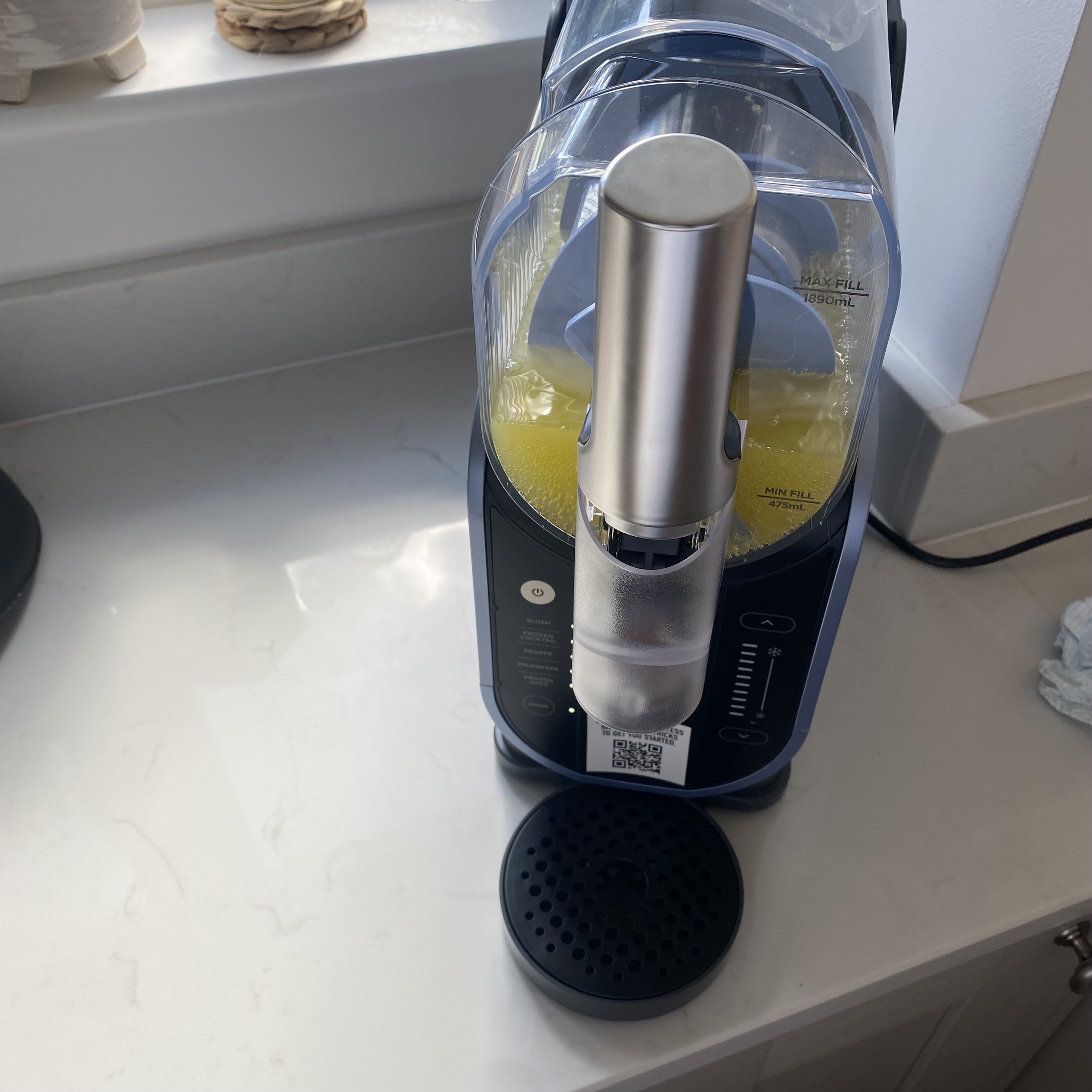 I've been waiting to try out the Ninja Slushi for months – this is what happened the first time I tried it
I've been waiting to try out the Ninja Slushi for months – this is what happened the first time I tried itThe Ninja Slushi is the stuff of dreams for summer entertaining
By Molly Cleary
-
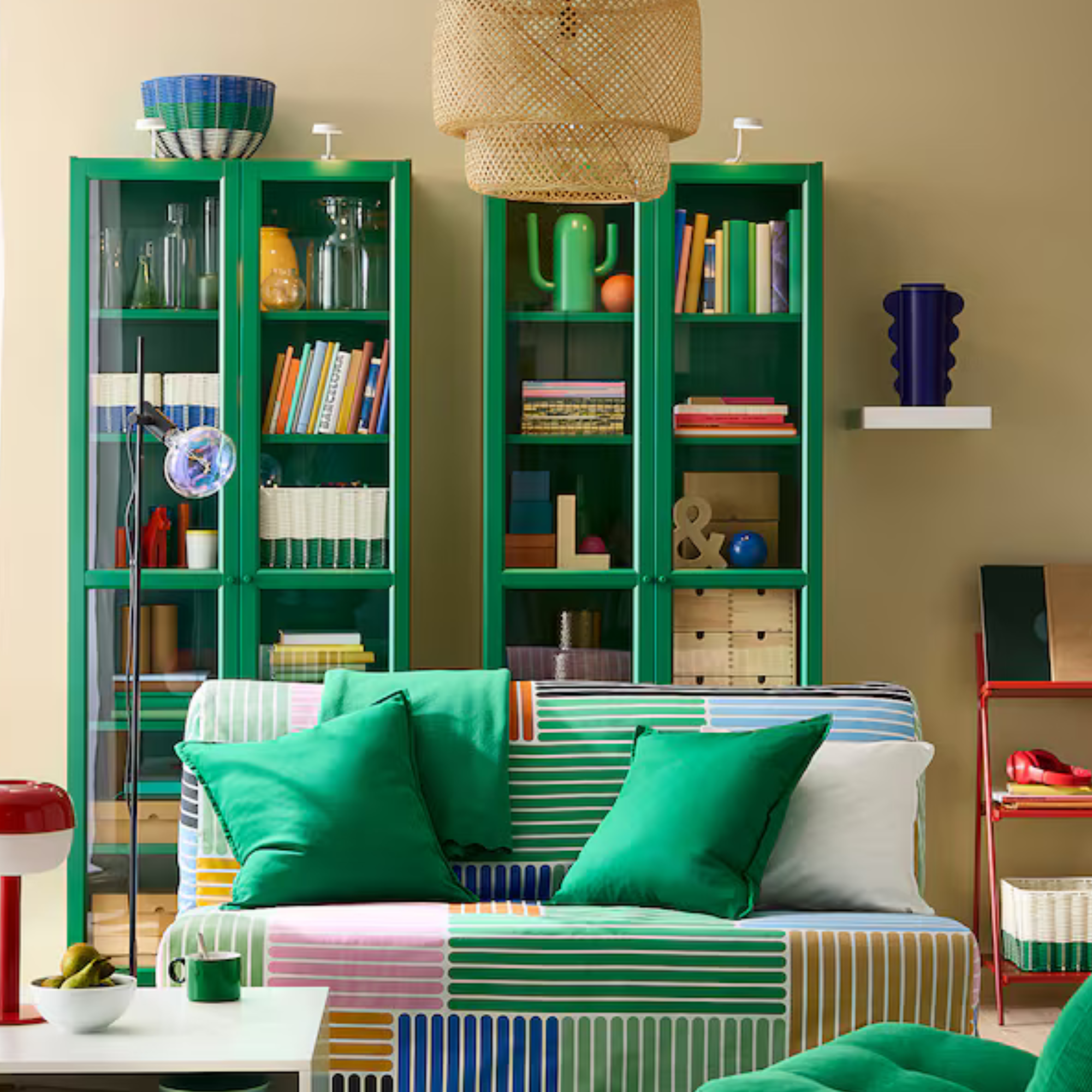 IKEA has drenched its BILLY bookcase in this year’s ‘it’ colour - but you’ll have to act fast if you want to get your hands on one
IKEA has drenched its BILLY bookcase in this year’s ‘it’ colour - but you’ll have to act fast if you want to get your hands on oneI'm obsessed with this gorgeous limited-edition colourway
By Kezia Reynolds